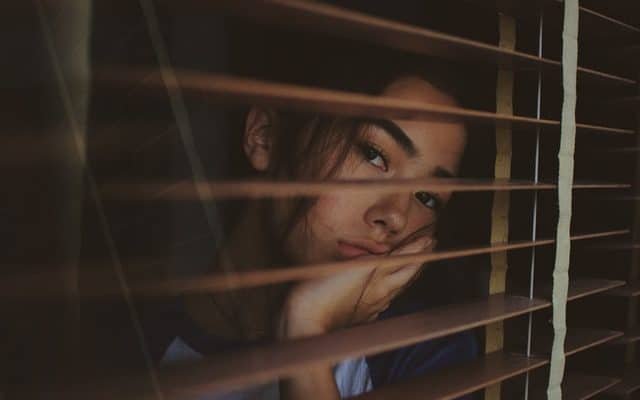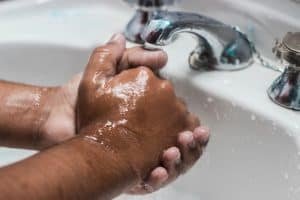COVID-19—Protect Yourself

COVID-19 has changed our world in scary ways. But no one can protect you better than yourself, and knowledge is the best way to do that. Here are the current facts and recommendations that will help keep you safe.
CURRENT STATE OF THE WORLD
At the end of May, the world moved toward business as usual, and the coronavirus again spiked its ugly head. With over 18 million verified cases, the global pandemic continues to surge.
The World Health Organization calls COVID-19 a Public Health Emergency of International Concern. July 31, 2020, WHO Director-General Dr. Tedros made a statement. He said many countries believed they were past the worst. Now they are grappling with new outbreaks. Some countries were less affected in the early weeks. Those are now seeing escalating numbers of cases and deaths. And some that had large outbreaks have brought them under control.
Here are the worldwide statistics, according to Johns Hopkins University:
June 28, 2020
Cases – 10 million
Deaths – 500,108
August 3, 2020
Cases – 18 million
Deaths – 690,413
Seven percent of the world’s population lives in the United States and Brazil. However, forty percent of the coronavirus cases come from these two countries.
In Brazil, the President downplayed the importance of taking precautions. Now case numbers are right behind that of the United States. The President of Brazil has tested positive as well.
After reopening their country in June, India had a spike in cases. In Delhi, almost one in four has the virus. They have the third-highest number of cases.
Three weeks after Spain eased restrictions, their case numbers tripled. Panama’s cases skyrocketed.
A Norwegian cruise ship shut down after the virus infected many aboard. Their trip included stops in coastal towns where they may have spread the disease. Hurtigruten’s CEO announced that they are now completing a procedural review.
THE WORLD’S REACTIONS
Recent spikes have made authorities think twice about relaxing restrictions. Here’s what several countries are doing about it.
Although Germany imposed new restrictions on its people, protests might render them ineffective. Columbia began partial lockdowns again.
Andrews, Premier of Victoria, declared a state of emergency in Australia. Melbourne imposed stage-four lockdown measures with new dusk-to-dawn curfews. “Where you slept last night is where you’ll need to stay for the next six weeks,” Andrews said.
In addition, the annual hajj to Mecca looked different this year. Last year, 2.5 million attended the event. This year, Saudi Arabia reduced the number of attendees to 1,000. In a typical ceremony, pilgrims drink from the holy well and kiss the sacred black stone. This year, the ceremony changed to prevent outbreaks of the virus.
One worldwide concern is people’s apathy toward taking the necessary precautions. Iranian’s took to the streets without masks or social distancing before last month. Since then, Iran mandated face masks in public places. According to Iran, one Iranian dies every seven minutes from the coronavirus. They hope an image of Ayatollah Ali Khamenei wearing a mask will encourage the public to follow his lead.
A NEW STUDY
A Germany study looked at the MRIs of over one hundred healthy adults. These adults in their forties and fifties had recovered from COVID-19. Only one-third of the infected adults went to the hospital during their illness. They compared the results to one hundred similar adults who were not infected. Over two months later, seventy-eight of those patients showed structural cardiac changes. Seventy-six of them showed evidence of a biomarker signaling cardiac injury. Sixty of them had signs of cardiac inflammation. This raises concerns over long-term damage to the heart. It worries Professor Satyendra Tiwari, Vice-Chair of the Cardiological Society in India. He supplied a similar statistic for studies across the world. Between twenty and thirty percent of hospitalized patients suffer from cardiac injury.
IF YOU GET THE CORONAVIRUS
Self-quarantine. Symptoms begin two to fourteen days after contracting the virus. Early studies show that those with mild cases recuperate within two weeks. Those with severe symptoms tend to take between three and six weeks to recover. Those with mild symptoms should not go to the hospital.
When you should seek medical help:
- If you cannot breathe well.
- If you have pain or pressure in your chest.
- If you experience continual exhaustion or confusion.
- If your lips or face are blue.
If you self-treat don’t leave your home until the following are true:
- Your temperature has been normal for at least three days.
- You are no longer coughing nor struggling to breathe.
- You have waited at least ten days since symptoms started OR
- You have had two negative COVID-19 tests (taken 24 hours apart).
PROTECT YOURSELF
You can take precautions against getting the virus. Follow these recommendations for a safer life.
- Wear a mask everywhere you go.
- Practice social distancing.
- Wash your hands often.
- Don’t touch your face.
- Cover coughs and sneezes with your elbow.
- Don’t share dishes, toiletries, or linens with others.
- Disinfect surface areas.
- Prepare in case there is another shut-down, or you get the virus. Do you have what you need to quarantine for two to six weeks?
We hope that soon there will be affordable coronavirus tests for use at home. The FDA might allow home testing if the companies creating them can abide by their rules. With these tests, the public could check their status before going out. Knowing if you are contagious would help limit the spread of the virus.
Protect yourself. Protect others. Become part of the solution so we can move past this trying time and on to a better day.













Very informative. I’m glad to read how nations are re-examining their rules, as it’s far from over. And I hadn’t thought to have enough supplies on hand for if I were to get the virus myself and be unable to leave home. I will stock up!
Ps: I also didn’t know about the cardiac injuries. That is sobering.